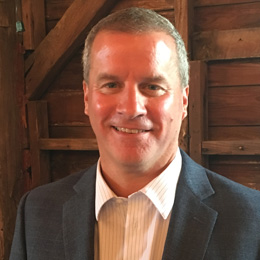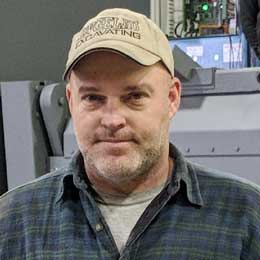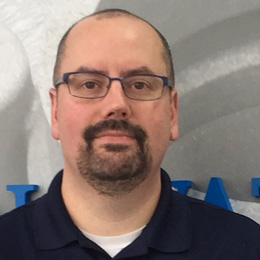3D METAL PRINTING & THE AUTOMOTIVE INDUSTRY
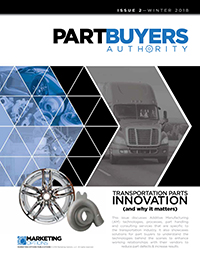
CHRIS BECK Manager of Operations, Co-Owner INNOVATIVE 3D MANUFACTURING
Published March 2018, Part Buyers Authority
Reprinted with permission from Part Buyers Authority
Two of today’s big buzzwords in manufacturing are Additive Manufacturing (AM) and 3D Printing. The technology is not new to the world but over the last few years it has grown exponentially. This is due to the number of inexpensive desktop printers that have been brought to the market and a new younger generation of engineers that are embracing this technology.
For under $500 you can have a 3D printer in your house which can allow you and your kids to make all kinds of cool things. I know my kids were so excited to see the first 3D printer work at home. The only problem was they lost interest quickly as that cool little boat they wanted printed didn’t take 5 minutes – it took 12 hours to make. Pretty much all schools and universities now have 3D printers and talk about the technology to their students. This is a great thing for the future of this growing industry which leads into our discussion.
Additive Manufacturing in the Automotive Industry
My background is CNC Machining (which today they call “Subtractive Manufacturing” which still sounds funny to me) and Automation. I live in the Midwest which is the automotive belt. The goal has always been to produce automotive parts faster, lighter, cheaper, more efficient with less labor, as seconds save hundreds of thousands of dollars per year. So where does a slow process like AM/3D printing fit into the automotive space.
The answer is, it may never be the solution for making high volume automotive parts. But it is the answer to compliment the manufacturing process in the Automotive Industry. AM can help make the process of making parts run faster which in the long run saves time and money.
For our discussion lets focus on 5 ways Additive Manufacturing (AM) using Direct Metal Laser Sintering (DMLS) can benefit the Automotive Industry.
- Prototypes of gears
- Prototypes of complex sheet metal parts and brackets
- Making fixture details, replacement parts and end effectors for automation
- Conformal cooling for plastics injection molding
- Conformal cooling for aluminum die casting
Prototypes
Gears
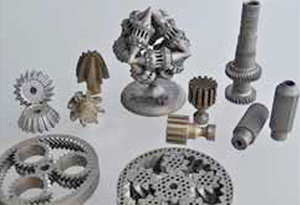
With all the changes in the transmission industry and the ramp up to 8, 9, and 10 speed transmissions DMLS machines can print near net shapes of gears out of variety of materials, fully dense and heat treatable. With the quick turnaround times and the near net shapes the R&D teams have minimal machining and grinding to get a whole working set of gears for a new project.
Prototypes
Complex Sheet Metal Design
Some amazing parts that our company has printed on our DMLS machines are complex steel sheet metal parts and brackets. Sheet metal parts were something that I would have never thought about printing until we started doing it for the aerospace industry. After proving successful in that industry, we adapted to printing a number of sheet metal parts for automotive industry. This process is great because we can print a tall thin walled part without warping. The downside is it has to be printed in 10” segments and welded or fastened back together. But for fit and trial it works great before the final investment of large progressive dies and breaks. Brackets are another component that can be printed quickly for mockups. The brackets can also be Topology Optimized (TO) for weight reduction and fit for tighter spaces in engine and drivetrain areas. When it comes to high performance automobiles, supercars and race cars the use of lattice structures and materials such as Titanium are also a huge game changer.
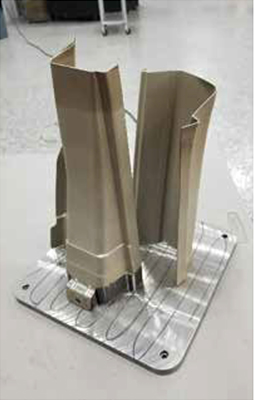
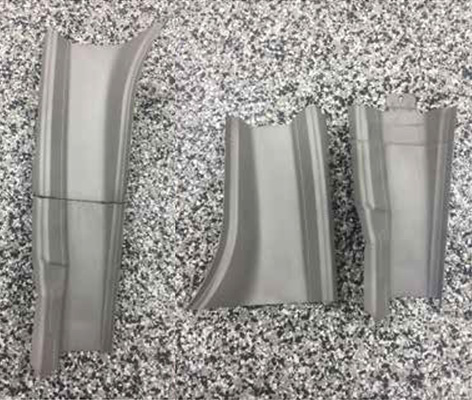
Producing
Fixtures, Replacement Parts, End Effectors
Another problem that we face is the skills gap shortage in manufacturing. As time goes on most predict that this is only going to become increasingly worse. With the use of AM it’s possible to take a person without the skill set of a Journeyman Machinist or Tool & Die Maker to make a fixture detail or replacement part very quickly. This can be a huge advantage in the automotive world when something breaks and the replacement part has a long lead time. With today’s technology we are able to reverse engineer a part and make it quickly. We can also generate backup details, tooling and end effectors at a very competitive price, in many cases at less cost versus traditional manufacturing.
Conformal Cooling
Injection Molding
Conformal cooling is one of the places where AM can deliver HUGE time and cost savings. The use of contoured cooling channels (called conformal cooling), gives the mold maker the ability to add water cooling lines in very tight spots and follow complex contours.
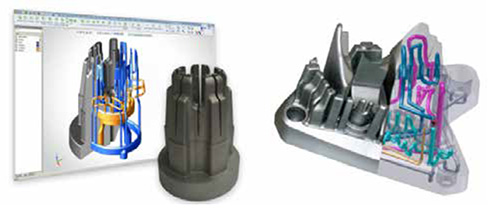
Traditionally lines are added by drilling holes and either making side intersecting holes and plugging them or not being able to cool some of these areas at all. With conformal cooling technology companies can now decrease cycle times of the parts, increase tooling life of the mold and reduce scrap. This is a new process – we have many studies that show the substantial cost saving benefits and better part production with the use of conformal cooling technology.
Conformal Cooling
Aluminum Die Casting
We have saved the best for last and the most exciting one for us. The challenge with conformal cooling and aluminum die casting is the extreme heat and pressures of the die casting process. Our company Innovative 3D Manufacturing has started a joint R&D project with a large die casting company, a large powder supplier and Purdue University. Our goal is to develop conformal cooled die cast mold inserts that will revolutionize the aluminum die casting market and will have a direct impact on the automotive parts industry.
Stay tuned! 3D Metal printing has proven itself to be important especially in complex part prototypes and production. It is proven in rubber mold applications as well. Watch for conformal cooling technologies as they are in the works now.
